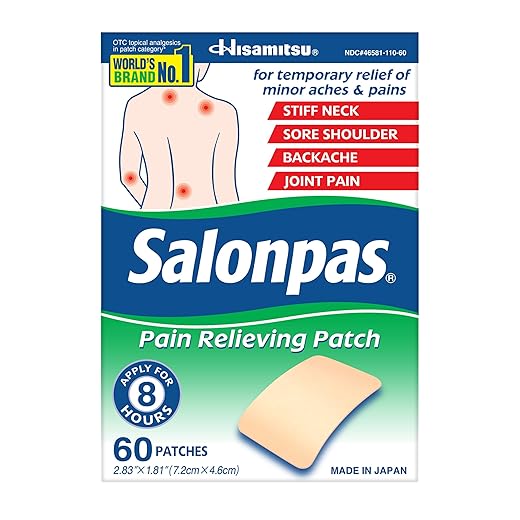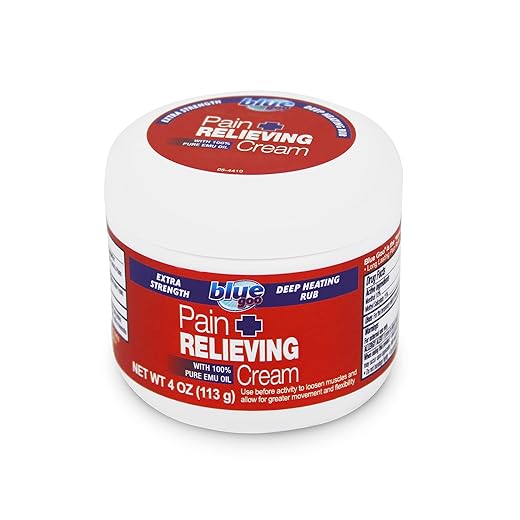Best Pain Relieving Cream Consumer Reports, Ratings, Reviews, Tips, and Guides in 2022
There are many different types of pain relief creams on the market, but which one is the best? Consumer Reports did a study to find out which cream provides the most relief. They tested six different creams and found that the best one was Salonpas Pain Relieving Gel Patch. If you are in need of some pain relief, be sure to check out this cream!
Top 10 Best Pain Relieving Cream to Buy in 2022
Below is the list of top 10 best Pain Relieving Cream that you can have a look at and buy. Check one by one carefully before purchasing.










What is Pain Relieving Cream ?
Pain relieving cream is a topical application that helps to soothe muscle and joint pain. It is typically made with an active ingredient such as menthol or capsaicin, which work by causing a cooling or heating sensation on the skin. This can help to temporarily numb the pain and provide some relief. Creams are available in both over-the-counter and prescription strength formulations.
How does Pain Relieving work?
When applied to the skin, pain relieving creams work by causing a sensation of either heat or cold. This can help to temporarily numb the pain and provide some relief. Creams are available in both over-the-counter and prescription strength formulations.
What are the side effects of Pain Relieving Cream?
The most common side effect of pain relieving cream is skin irritation. This can occur if the cream is applied to an area that is already irritated or if the active ingredient is too strong for your skin type. If you experience any irritation, discontinue use of the cream and consult your doctor.
Who Should Use Pain Relieving Cream?
Pain relieving cream can be used by anyone who is experiencing muscle or joint pain. If you have sensitive skin, however, you may want to test the cream on a small area of skin before applying it over a larger area.
What are the different types of Pain Relieving Cream ?
There are two main types of pain relieving cream: over-the-counter and prescription. Over-the-counter creams are typically weaker than prescription creams and can be bought without a doctor’s prescription. Prescription creams are stronger and must be prescribed by a doctor.
Over-the-counter pain relieving creams are typically made with menthol or capsaicin as the active ingredient. These can work well to temporarily numb pain, but may cause skin irritation in some cases.
Prescription pain relieving creams are usually made with lidocaine or bupivacaine as the active ingredient. These are much stronger than over-the-counter creams and can provide more long-lasting relief. However, they can also cause more serious side effects, such as dizziness, drowsiness, and nausea.
Benefits of Pain Relieving Cream ?
For one, pain relieving cream can help to target specific areas of pain. Whether you have back pain, neck pain, or arthritis, there are pain relieving creams that can help to ease your discomfort.
Another benefit of pain relieving cream is that it can offer relief without the need for medication. If you are looking for a natural way to ease your pain, then a pain relieving cream is a great option.
Finally, pain relieving cream can offer quick and easy relief. When you apply the cream to your skin, it is quickly absorbed and begins to work immediately. This means that you can get relief from your pain in just a matter of minutes.
Pros and Cons of Pain Relieving Cream?
Pros
– Relief from muscle and joint pain
– Temporary numbness of the pain
– Improvement in blood circulation
– Loosening of tight muscles
Cons
– Skin irritation
– Strong sensation that may be too intense for some
– May not provide long-lasting relief
How to Use Pain Relieving Cream?
Pain relieving cream is typically applied to the skin and then covered with a bandage or cloth. The cream can be applied multiple times per day as needed. If you experience any skin irritation, discontinue use of the cream and consult your doctor.
Common Mistakes When Using Pain Relieving Cream ?
One common mistake when using pain relieving cream is not applying it to the affected area for long enough. The cream needs to be left on the skin for at least 10 minutes in order to be effective.
Another common mistake is not using a bandage or cloth to cover the cream. This will help to prevent the cream from being rubbed off and will also help to keep the area warm, which can increase blood flow and help to loosen tight muscles.
Key Points:
– Pain relieving cream is used to relieve muscle and joint pain.
– It comes in both over-the-counter and prescription strength formulations.
– The most common side effect is skin irritation.
– To use, apply the cream to the affected area and cover with a bandage or cloth.
– Do not use the cream for more than 10 minutes at a time.
– If you experience any skin irritation, discontinue use and consult your doctor.
Factors to consider before buying Pain Relieving Cream ?
– The Active Ingredient: Menthol and capsaicin are the most common active ingredients in over-the-counter pain relieving creams. These can work well to temporarily numb pain, but may cause skin irritation in some cases. If you have sensitive skin, you may want to choose a cream with a different active ingredient, such as lidocaine or bupivacaine.
– The Strength: Over-the-counter pain relieving creams are typically weaker than prescription creams. If you’re looking for a stronger cream, you may need to ask your doctor for a prescription.
– The Side Effects: All pain relieving creams can cause some side effects, such as skin irritation. However, some active ingredients, such as lidocaine and bupivacaine, can also cause more serious side effects, such as dizziness, drowsiness, and nausea. Be sure to read the label carefully and understand all of the potential side effects before using any cream.
-The Brand: For over-the-counter pain relieving creams, there are many different brands to choose from. Read reviews to see what other users have to say about a particular brand before purchasing.
-The Price: Pain relieving creams can range in price from a few dollars to over $100. The price will typically depend on the strength of the cream and the brand.
-The Warranty: Some manufacturers offer a money-back satisfaction guarantee. This is a good option if you’re trying a new cream and want to make sure it works for you.
-Size: Pain relieving creams come in a variety of sizes. Choose a size that will be enough to last you for a while, but not so much that it will go to waste if it doesn’t work for you.
FAQs
1. What is pain relieving cream?
Pain relieving cream is a topical medication that is used to relieve muscle and joint pain. It comes in both over-the-counter and prescription formulations, and the active ingredient can vary depending on the brand. The most common side effect is skin irritation.
2. How do you use pain relieving cream?
To use pain relieving cream, apply it to the affected area and cover with a bandage or cloth. The cream can be applied multiple times per day as needed. If you experience any skin irritation, discontinue use of the cream and consult your doctor.
3. What are the side effects of pain relieving cream?
The most common side effect of pain relieving cream is skin irritation. However, some active ingredients, such as lidocaine and bupivacaine, can also cause more serious side effects, such as dizziness, drowsiness, and nausea. Be sure to read the label carefully and understand all of the potential side effects before using any cream.
4. How much does pain relieving cream cost?
Pain relieving creams can range in price from a few dollars to over $100. The price will typically depend on the strength of the cream and the brand.
5. Is there a warranty or satisfaction guarantee for pain relieving cream?
Some manufacturers offer a money-back satisfaction guarantee. This is a good option if you’re trying a new cream and want to make sure it works for you.
6. What size options are available for pain relieving cream?
Pain relieving creams come in a variety of sizes. Choose a size that will be enough to last you for a while, but not so much that it will go to waste if it doesn’t work for you.
7. Where can I buy pain relieving cream?
You can purchase pain relieving cream at most pharmacies and drug stores. You can also find it online from a variety of retailers.
8. What should I look for when choosing a pain relieving cream?
When choosing a pain relieving cream, you should consider the strength, side effects, brand, price, warranty, and size. Read reviews from other users to see what their experience has been with a particular brand or product.
9. Can I use pain relieving cream while pregnant?
There is no definitive answer, as each woman’s situation is different. You should always consult with your doctor before using any medication, including pain relieving cream, during pregnancy.
10. Can I use pain relieving cream while breastfeeding?
Again, there is no definitive answer, as each woman’s situation is different. You should always consult with your doctor before using any medication, including pain relieving cream, while breastfeeding.
Conclusion
When it comes to finding the best pain relief cream, Consumer Reports can help. Their rigorous testing helps consumers make informed decisions when it comes to choosing a product that will work best for them. Whether you’re looking for an over-the-counter option or something prescription-strength, CR has all the information you need to make the right choice for your needs. So what are you waiting for? Head over to their website and check out the latest report on pain relief creams. And don’t forget to come back and tell us which one worked best for you!
I’m Georgie Barton, a reviewer for various magazines . I’ve been testing and writing about household products and electronics for years, and have become quite the authority on the subject. My goal is to help people make informed decisions when purchasing these items, so they can get the most value for their money.
My hope is that through my work, everyone will be able to find a quality and satisfactory product. Thank you for reading!
